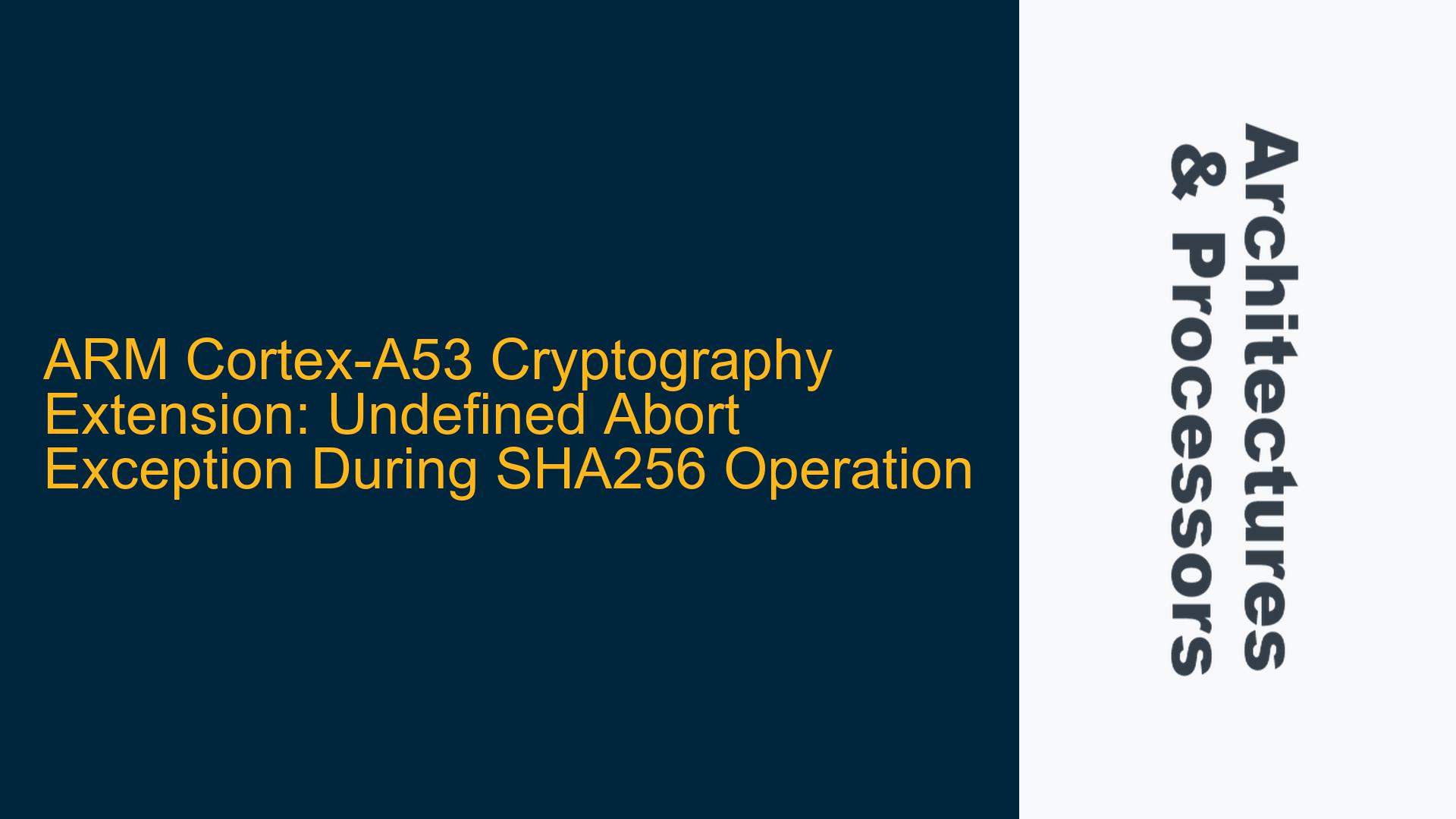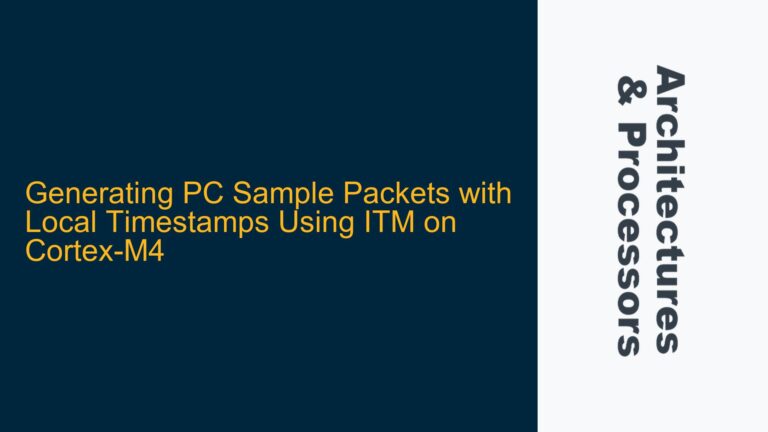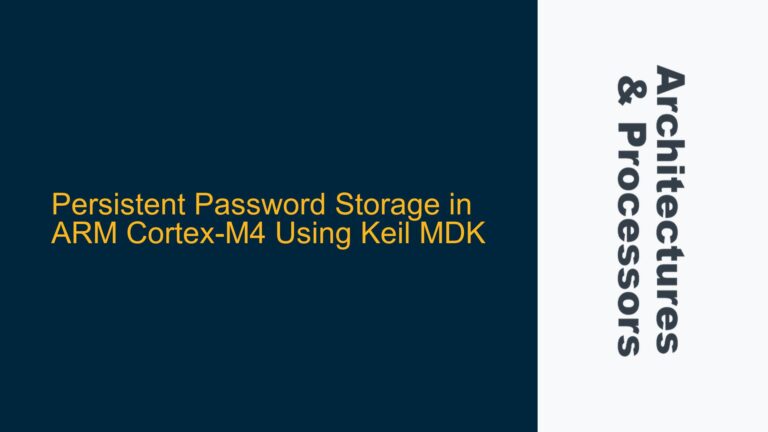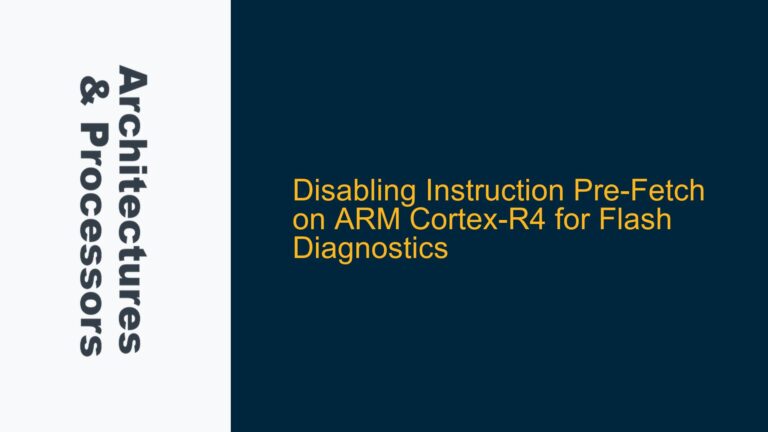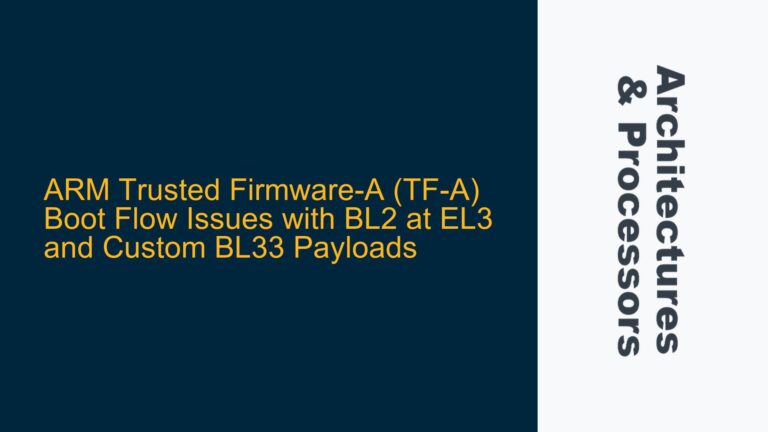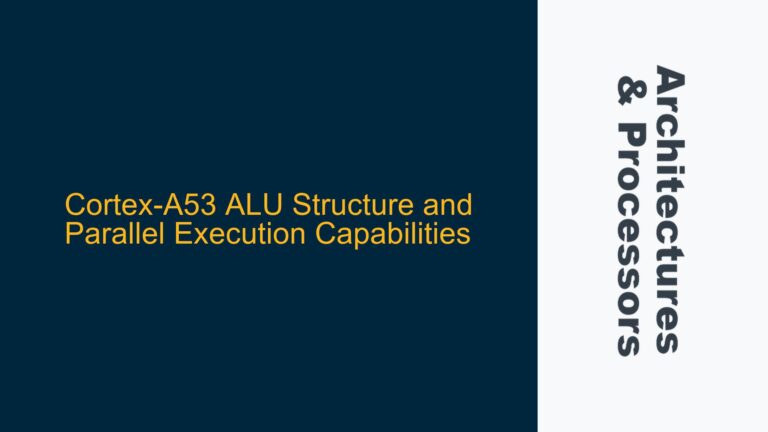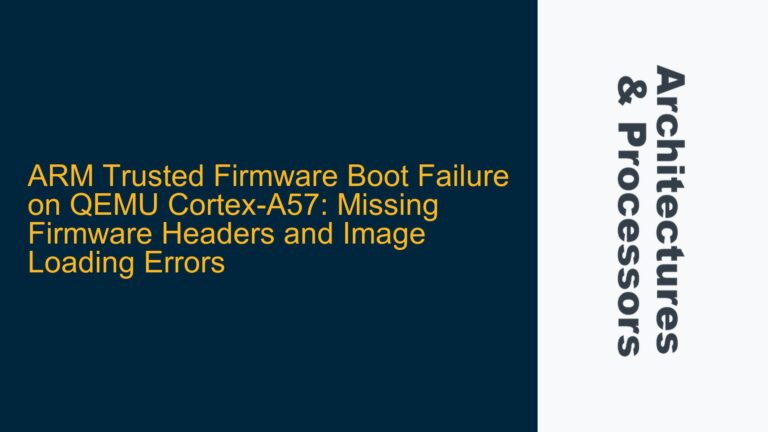ARM Cortex-A53 Cryptography Extension: Undefined Abort Exception During SHA256 Operation
The ARM Cortex-A53 processor, part of the ARMv8-A architecture, is widely used in embedded systems for its balance of performance and power efficiency. One of its notable features is the optional support for cryptographic extensions, which accelerate encryption and decryption operations. However, when attempting to utilize these extensions, particularly for SHA-256 operations, developers may encounter an "undefined abort" exception. This issue is particularly perplexing when the processor’s specifications claim support for cryptographic extensions, yet the hardware behaves as if these features are absent. This post delves into the root causes of this issue, explores possible reasons for the discrepancy between expected and actual behavior, and provides detailed troubleshooting steps to resolve the problem.
ID_AA64ISAR0_EL1 Register Indicates Missing SHA2 Support
The core of the issue lies in the ID_AA64ISAR0_EL1 register, which provides information about the instruction set attributes supported by the processor. Specifically, the SHA2 field (bits [15:12]) indicates whether the processor supports SHA-256 instructions. In the case of the Cortex-A53, this field reads 0b0000, which signifies that SHA2 instructions are not implemented. This is despite the fact that the processor’s documentation and specifications suggest that cryptographic extensions, including SHA-256, are supported.
The ID_AA64ISAR0_EL1 register is a critical piece of hardware that software relies on to determine the capabilities of the processor. When this register indicates that SHA2 instructions are not supported, any attempt to execute these instructions will result in an "undefined abort" exception. This is because the processor does not recognize the instruction and cannot execute it, leading to a fault.
The discrepancy between the expected support for SHA2 instructions and the actual hardware behavior can be attributed to several factors. One possibility is that the cryptographic extensions were not enabled during the manufacturing process. Another possibility is that the specific implementation of the Cortex-A53 in the Xilinx ZynqMP UltraScale+ SoC does not include the cryptographic extensions, despite the general Cortex-A53 architecture supporting them. This could be due to cost-saving measures or other design considerations by the SoC manufacturer.
ARMv8.0-A vs ARMv8.2-A: SHA2 Instruction Support Differences
The ARMv8-A architecture has evolved over time, with different versions introducing new features and extensions. The Cortex-A53 is based on the ARMv8.0-A architecture, which includes support for basic cryptographic extensions such as AES (Advanced Encryption Standard) and SHA1 (Secure Hash Algorithm 1). However, support for SHA2-256 instructions was introduced in the ARMv8.2-A architecture. This means that while the Cortex-A53 can support AES and SHA1 instructions, it does not natively support SHA2-256 instructions unless it is based on the ARMv8.2-A architecture or later.
The distinction between ARMv8.0-A and ARMv8.2-A is crucial in understanding why the SHA2 instructions are not supported on the Cortex-A53. The ARMv8.0-A architecture, which the Cortex-A53 is based on, does not include the SHA2-256 instructions as part of its cryptographic extensions. Therefore, even if the processor’s documentation suggests that cryptographic extensions are supported, it is important to note that this support is limited to the features available in the ARMv8.0-A architecture.
In the case of the Xilinx ZynqMP UltraScale+ SoC, the Cortex-A53 cores are based on the ARMv8.0-A architecture, which means that they do not support SHA2-256 instructions. This is why the ID_AA64ISAR0_EL1 register indicates that SHA2 instructions are not implemented. The SoC manufacturer may have chosen to implement the Cortex-A53 cores without the ARMv8.2-A extensions, either to reduce costs or because the additional features were not required for the intended use case.
Verifying and Enabling Cryptographic Extensions in Cortex-A53
To resolve the issue of the "undefined abort" exception during SHA256 operations, it is essential to verify whether the cryptographic extensions are indeed supported by the Cortex-A53 processor in the Xilinx ZynqMP UltraScale+ SoC. This can be done by examining the ID_AA64ISAR0_EL1 register, as previously discussed. If the SHA2 field indicates that SHA2 instructions are not supported, then the processor does not have the necessary hardware to execute these instructions.
If the cryptographic extensions are not supported, there are a few potential solutions. One option is to use software implementations of the SHA-256 algorithm, which do not rely on the cryptographic extensions. While this approach may not offer the same performance benefits as hardware-accelerated instructions, it will allow the application to function correctly without encountering the "undefined abort" exception.
Another option is to check with the SoC manufacturer to determine whether the cryptographic extensions can be enabled or if there is a firmware update that adds support for these features. In some cases, the extensions may be present in the hardware but disabled by default. Enabling them may require a firmware update or a configuration change in the bootloader or kernel.
If the cryptographic extensions are supported but not enabled, the following steps can be taken to enable them:
-
Check the Bootloader Configuration: The bootloader may have options to enable or disable specific processor features, including cryptographic extensions. Review the bootloader documentation and configuration files to determine whether the extensions can be enabled.
-
Update the Firmware: The SoC manufacturer may provide firmware updates that enable additional features, including cryptographic extensions. Check the manufacturer’s website for any available updates and follow the instructions to apply them.
-
Modify the Kernel Configuration: The Linux kernel, if used, may have configuration options related to the cryptographic extensions. Ensure that the kernel is configured to support the extensions and that the necessary drivers are loaded.
-
Verify the Hardware: In some cases, the cryptographic extensions may be physically absent from the hardware. This can be verified by consulting the SoC’s datasheet or contacting the manufacturer directly. If the extensions are not present, the only option is to use software implementations of the cryptographic algorithms.
In conclusion, the "undefined abort" exception during SHA256 operations on the Cortex-A53 processor is likely due to the lack of support for SHA2-256 instructions in the ARMv8.0-A architecture. By verifying the ID_AA64ISAR0_EL1 register and exploring potential solutions, developers can resolve the issue and ensure that their applications run correctly on the Xilinx ZynqMP UltraScale+ SoC.
